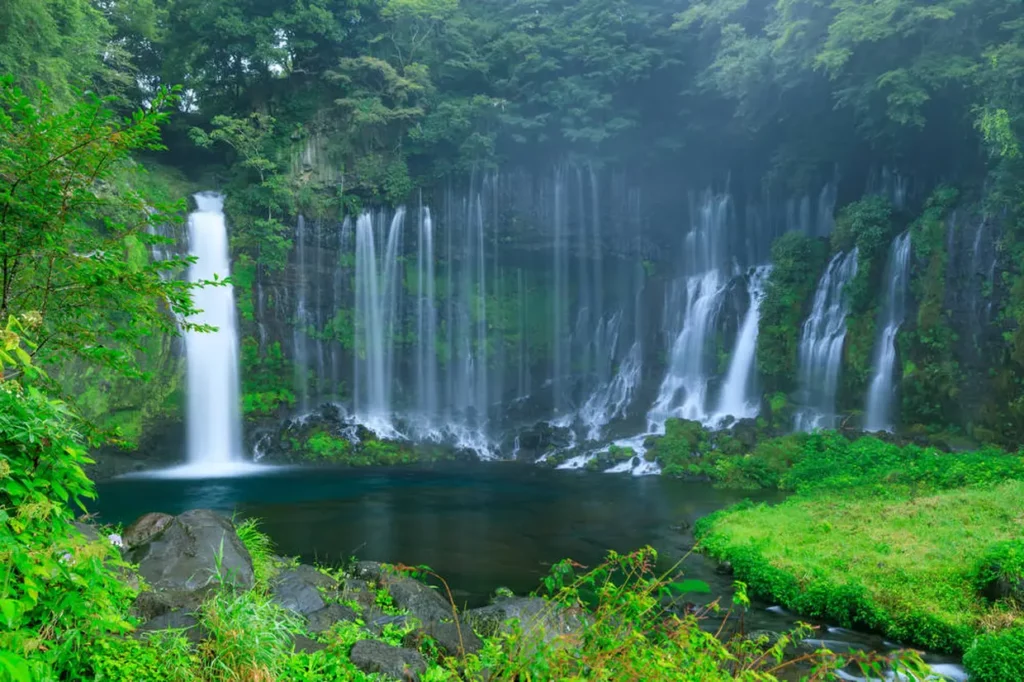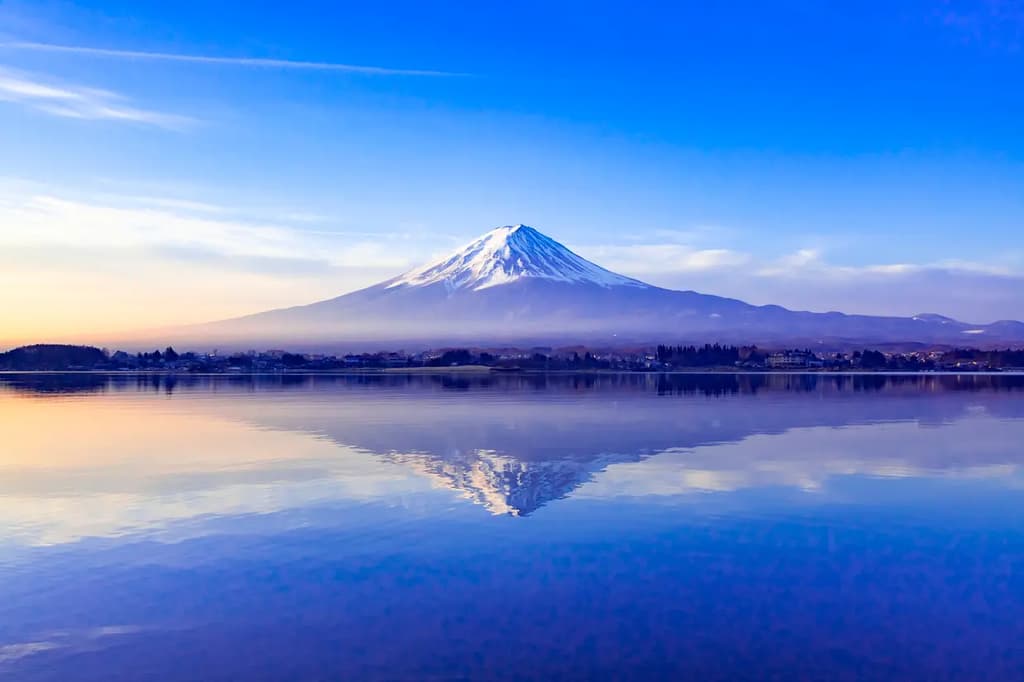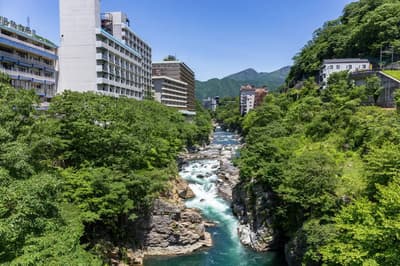Basic Information about Mount Fuji
Mount Fuji, widely known as a symbol of Japan, is a beautiful mountain that was registered as a UNESCO World Heritage site in 2013. This mountain has been cherished as a motif in poetry and paintings for centuries. With a height of 3,776 meters, it is the highest mountain in Japan. Located on the border between Yamanashi and Shizuoka prefectures, it can also be seen from Tokyo.
Mount Fuji showcases different beauties in each season: cherry blossoms in spring, lush green scenery in summer, colorful leaves in autumn, and a snow-capped peak in winter. These diverse landscapes attract many visitors, and a large number of tourists visit every year.
Characteristics of Mount Fuji
Mount Fuji boasts unique charm with its natural environment and climate. For instance, the temperature difference between the summit and the base varies greatly by season, with the summit’s temperature dropping close to minus 18 degrees Celsius in winter. Even in summer, the average temperature at the summit is about 6 degrees Celsius, requiring proper cold-weather gear for climbing.
The geology and formation process of Mount Fuji are also fascinating. The mountain is composed of four volcanoes, with “Komitake” volcano emerging over 100,000 years ago. After subsequent eruptions of “Old Fuji” and “New Fuji” volcanoes, the current beautiful conical shape was formed. Mount Fuji is an active volcano, with the last eruption being the “Hoei Eruption” in 1707, and there remains a possibility of future eruptions.
The reason Mount Fuji appears blue in winter is the same as the blue sky. The molecules in the air reflect blue light, making Mount Fuji appear blue amidst the clear winter air.
Culture and Art of Mount Fuji
Mount Fuji has played an important role in Japanese culture and art due to its beautiful and mystical presence. Revered as an object of worship since ancient times, Mount Fuji has been the subject of numerous artworks and is deeply rooted in the hearts of the Japanese people.
Since the Heian period, Mount Fuji has also been used as a training ground for “Shugendo” practitioners who undertake rigorous training. During the Edo period, a religious group called “Fuji-ko” emerged, making pilgrimages to Mount Fuji popular among the common people.
Paintings and Literature Featuring Mount Fuji
- Katsushika Hokusai: An ukiyo-e artist from the Edo period, Hokusai depicted Mount Fuji from various angles in his series “Thirty-Six Views of Mount Fuji,” which has been highly praised both in Japan and internationally.
- Utagawa Hiroshige: Another ukiyo-e artist from the Edo period, Hiroshige depicted Mount Fuji in the background of his famous works such as “The Fifty-Three Stations of the Tokaido” and “One Hundred Famous Views of Edo.”
- Yokoyama Taikan: A master of modern Japanese painting, Taikan created many masterpieces, including “Gunjo Fuji” (Ultramarine Fuji), using his unique techniques.
- Manyoshu: Japan’s oldest anthology of poems, “Manyoshu,” includes works that praise the beauty of Mount Fuji.
- Taketori Monogatari: In the story’s conclusion, the protagonist Kaguya-hime returns to the moon, burning the elixir of immortality on Mount Fuji.
Mount Fuji has also influenced the West:
- Edmond de Goncourt: A French writer who praised Hokusai’s prints, influencing Impressionist painters such as Monet.
- Claude Debussy: A composer who incorporated Mount Fuji’s artistic essence by using Hokusai’s “The Great Wave off Kanagawa” on a music score cover.
Thus, Mount Fuji has transcended time, influencing many people, and its beauty and mysticism continue to inspire numerous works of art.
Tourist Spots and Activities around Mount Fuji

The area around Mount Fuji boasts many tourist spots:
- Fuji Five Lakes Area: The reflection of Mount Fuji on the lake surfaces is a must-see.
- Oshino Hakkai: A famous spot with eight ponds fed by the spring water from Mount Fuji’s snowmelt.
- Shiraito Falls: A waterfall with a height of 26 meters and a width of 130 meters, named for its resemblance to a curtain of white threads.
There are many activities to enjoy around Mount Fuji, including hiking and photography. You can also enjoy local specialties made with Mount Fuji’s spring water. The high-quality subterranean water from Mount Fuji has been indispensable to people’s lives for centuries.
Basics of Climbing Mount Fuji
When climbing Mount Fuji, it’s important to follow the rules and enjoy the experience safely.
Climbing Season of Mount Fuji
The climbing season for Mount Fuji is from early July to mid-September. During this period, the following four main climbing routes are open:
- Yoshida Route
- Fujinomiya Route
- Subashiri Route
- Gotemba Route
Climbers typically start from the fifth station of each route, with buses commonly used for access to the trailheads.
Preparation for Climbing
Proper equipment and clothing are crucial for climbing. It is recommended to bring cold-weather gear, rain gear, sufficient water, and food.
To prevent altitude sickness, it is important to climb slowly and consider staying overnight in a mountain hut. Reservations are required for mountain huts, which offer simple facilities for rest and sleep.
Make sure to check the weather forecast before starting your climb and be prepared for sudden weather changes.
Rules for Environmental Protection
When climbing Mount Fuji, it is also essential to follow rules for environmental protection:
- Take all trash with you
- Protect the natural environment
- Adhere to prohibitions
While Mount Fuji offers beauty and the joy of challenge, proper preparation and adherence to rules are necessary. Enjoy a wonderful climbing experience while preserving the beautiful nature.

